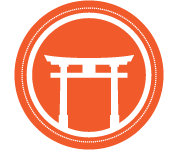Mixed-Age Practice and Neuroscience
Inryoku Volume 6 Issue 5
By AOSB Member Jamie O’Hara Zeigler, 5th kyu
from the editors
For this month’s issue of Inryoku, we are thrilled to present an article on the value of mixed-aged practice written by dojo member Jamie O’Hara Zeigler. At AOSB, we offer classes for kids ages 4-5 and 6-12 years, and adults. The adult classes are for ages 13 and older. The current age range in adult classes is 13 to 72.
Over the last 25 years, we’ve seen and experimented with different age breakdowns. While there are some advantages to smaller cohorts, bringing together teenagers and adults with a common pursuit is a unique and valuable experience and, we think, makes for better aikido.
As an adult eager to workout and put a long commute behind you, you might walk into the dojo to see a group of teenagers squirming their way into seiza, and think: What am I going to learn from these younglings?
The author and her teenage son Theo after their 6th kyu exams.
More than you would expect.
At fifteen, if you walk into class looking to burn off steam, and see a sea of people who look as old as your parents—maybe a bit younger if you squint—you might be tempted by an eye roll. How are these boomer spawn going to be able to help me?
It turns out, quite a bit.
One need not look beyond neurological development to see the benefits of mixed-age practice.
Teenagers are in the process of developing connectivity to the prefrontal cortex. This means that pathways inhibiting impulsiveness and generating focus are still under construction.
Thanks to a process called neuromirroring, a younger and more sensitive student is going to be able to reproduce the focus and calm in an adult practicing nearby, provided they feel safe.
A centered and kind adult with an established practice will be able to walk a teenager through techniques from a place of grounded calm. When they are attuned, they can form harmony by co-regulating their nervous systems.
There’s more to mixed-aged practice than focus, though. As the teenager I practice with put it: You work with different sizes and strengths. And this way, you get to see what it is like to work with or fight with someone bigger or smaller than you.
Over the long term, a new faculty begins to take root: the combination of the practice as a tool, and the presence of adults, accelerates the maturation process of younger practitioners.
For adults, when training with a teen, a parenting/teaching reflex kicks in, which fosters beginner's mind, and helps us solidify our own knowledge. When the adult lacks information, we show humility by asking for guidance. Teens who are higher ranked than their elders benefit too, as teaching is the best way to solidify learning.
The deference that adults show to people who have mastered an art form and the respect for that permeates the practice. When younger minds are exposed to those values, they begin to absorb them. The practice itself becomes a universal language that connects everyone across different ages.
Focus in a classroom can be chemical. Students will match the focus in the room. Adults can model humility by slowing down, and asking when they need help. And when we remember to look ahead—or behind—on the journey, everyone benefits.
Just make sure you check in with your partner before doing an advanced technique. Young students can generate enough power and speed to throw their older partner straight into the chiropractor’s office.




